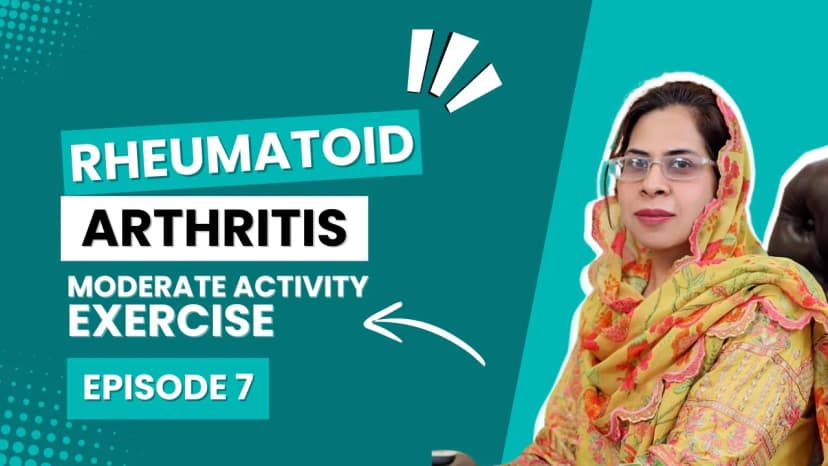Blog

SLE Lumpus Symptoms
Our next few posts will focus on Systemic Lupus Erythematosus (SLE). SLE is a complex autoimmune disease. Instead of protecting the body, the immune system mistakenly starts targeting healthy tissues. In this way, the body begins attacking itself and gradually damages its own organs.

Diagnosis of SLE Lumpus
We are discussing Systemic Lupus Erythematosus (SLE), and in the last post, we learned that if the common symptoms of SLE are not being seen, we may still suspect an autoimmune disease or SLE. Apart from this, some features are very typical of SLE, such as complete hair loss on the head, marks on the feet, or the butterfly rash on the face. There are many tests available to diagnose SLE, which your rheumatologist may prescribe, such as ANA, dsDNA, ESR, CRP, C3, C4 levels, etc. These tests detect autoantibodies in the body. A rheumatologist prescribes and interprets these tests properly to diagnose the disease accurately.

The Importance of Vitamin D for Arthritis Patients
Vitamin D is an essential nutrient, especially crucial for individuals with arthritis. What makes vitamin D so vital? It plays a key role in helping the body absorb calcium, which strengthens bones and supports the proper functioning of muscles and nerves. Beyond this, vitamin D boosts the immune system, aiding in the defense against harmful organisms like bacteria and viruses. Additionally, an optimal level of vitamin D can modulate the immune system, reducing autoimmunity, which is particularly beneficial in managing autoimmune diseases such as arthritis.

Symptoms of SLE/Lumpus
Our post today is about arthritis of the back, specifically Ankylosing Spondylitis (AS). It is crucial to be aware of this condition because it is one of the most commonly missed types of arthritis. Just two days ago, a young man brought his mother to me for treatment of arthritis. The young man himself had difficulty walking and his back was completely stiff. Despite consulting many doctors, his condition had gone undiagnosed. He was a classic case of Ankylosing Spondylitis. There are numerous similar cases where typically young men, often very young, suffer from arthritis of the back but remain undiagnosed. Therefore, raising awareness about this condition is vital.

Ankylosing Spondylitis Most Misdiagnosed Arthritis
Our post today is about arthritis of the back, specifically Ankylosing Spondylitis (AS). It is crucial to be aware of this condition because it is one of the most commonly missed types of arthritis. Just two days ago, a young man brought his mother to me for treatment of arthritis. The young man himself had difficulty walking and his back was completely stiff. Despite consulting many doctors, his condition had gone undiagnosed. He was a classic case of Ankylosing Spondylitis. There are numerous similar cases where typically young men, often very young, suffer from arthritis of the back but remain undiagnosed. Therefore, raising awareness about this condition is vital.

Osteoarthritis in Back and Knee
In this post we will discuss how to manage osteoarthritis in the knee and back. Regular physical activity is crucial for osteoarthritis management. It not only strengthens the legs and supports the joints but also improves pain and stiffness, enhances balance, and reduces the risk of falls. Both stationary cycling and swimming are excellent exercises for osteoarthritis patients. Walking is also beneficial, but it's best to consult your doctor before starting a regular walking routine.

Osteoarthritis in Hand and Feet
In this post we will discuss how to manage osteoarthritis in the hands and feet. Management involves two main approaches: medication and lifestyle modifications, which include changes to daily routines that can help control the disease more effectively. Osteoarthritis in the feet initially affects the arch of the foot. At this stage, improving your footwear can make a significant difference. Proper footwear can help manage peroneal arthritis and prevent its progression. Always choose comfortable shoes with soft soles that do not cause friction.

Building Strong Bones to Prevent Osteoporosis
In this post we will discuss how to build strong bones for ourselves and our children to avoid diseases like osteoporosis. Osteoporosis is characterized by brittle bones. In women, bones typically start to weaken after age 50, and in men, after age 65. During this process, bone mass decreases, making the bones fragile and prone to fractures even with minimal trauma. In some cases, bones can become so weak that they fracture without any trauma at all.

What is Osteoarthritis?
Osteoarthritis is the most prevalent form of arthritis, primarily affecting the joints. Contrary to a common misconception, it is not typically seen in children; instead, it predominantly affects adults, particularly those over 50 years of age. Osteoarthritis is a degenerative joint disease, often associated with the natural aging process.s

Sleep and Stress Management for Rheumatoid Arthritis?
Two things are very important for rheumatoid arthritis patients: good sleep and stress management. Good quality sleep means seven to eight hours of regular, deep sleep each night. This type of sleep helps keep blood pressure, sugar levels, and weight low, and it improves the health of the heart, brain, and memory. During sleep, our body's daily healing occurs, making deep sleep crucial. Patients often have many sleep problems, but these can be improved with some tips.

Moderaate Activity Exercises For Rheumatoid Arthritis Patients?
Just as exercise is essential for a healthy, active life in a normal person, its importance increases even more in arthritis. There are two types of exercises for rheumatoid arthritis. One is aerobic exercise, which involves the whole body, and the other is exercises to strengthen the joints affected by rheumatoid arthritis. In today's post, we are discussing aerobic exercises.

Treatment of Rheumatoid Arthritis
Rheumatoid arthritis requires ongoing management. Many medicines are used to achieve remission. When starting treatment, steroids are often included as they are effective and help control the disease quickly. Rheumatologists use steroids for a limited time to minimize side effects. Patients are often concerned about using steroids, but controlled use for the first three to six months can be beneficial.

Diet for Rheumatoid Arthritis Patients
Diet is very important in managing rheumatoid arthritis. Inflammation can be controlled through diet, while eating the wrong foods can increase inflammation in the body and joints. It's important to note that 20% of arthritis patients are sensitive to certain food groups. Foods like gluten, rice, meat, or pulses may immediately increase inflammation in some patients. These foods should be completely avoided if they trigger symptoms.

Managing Side Effects of Medicine While Treating Rheumatoid Arthritis
Side effects of medicines are a very important aspect in the management of rheumatoid arthritis. Since these medicines are taken long-term, doctors ensure that side effects do not significantly affect patients.

DMARDs Latest Treatment Option for Rheumatoid Arthritis
One of the most recent developments in treatment is the discovery of Biologic DMARDs, which are new medicines. These have been developed after extensive research and are now readily available in Pakistan.

What is Rheumatoid arthritis?
Rheumatoid arthritis is an autoimmune disease affecting the joints. In this condition, the joints become painful, swollen, and stiff in the morning. Usually, joints on both the right and left sides are involved, and small joints such as those of the fingers and toes are definitely affected.

Symptoms and Diagnosis of Rheumatoid Arthritis
Rheumatoid arthritis is a disease of the joints that causes pain, swelling, and stiffness, especially in the morning for more than half an hour. Fingers and toes are often affected early and more severely, but many joints like the wrists, knees, shoulders, and ankles can also be involved.
